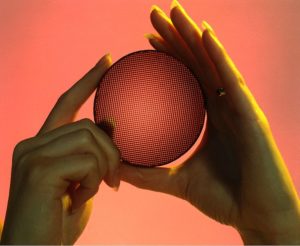Close just doesn’t cut it
This idea of removing only carbon from the atmosphere in order to bring such down to acceptable levels, in my opinion, just doesn’t go far enough. For my money this needs to be more inclusive a proposition and by that I mean if the atmosphere is to be filtered of carbon, then other air impurities must be the focus of that removal regime as well. This idea lends itself nicely to air filtration in general as we shall see.
So, why is this important, essential?
There was once a time when diesel-engine-equipped automobiles were in vogue. In the U.S., I believe this was in the late 1960s. In Europe, this was much more recently. This has relevance.
I cannot say what the big deal about the diesel draw was domestically, but overseas, particularly in Europe and especially during the current century’s first 10 years and perhaps into the second decade some, the big deal apparently was this notion that automobiles powered by diesel motors would be better for and easier on the environment because they were said to emit less carbon into the atmosphere than comparable petrol-powered cars. And, this idea of lower carbon amounts introduced into the air from diesel-driven motor vehicles appeared to resonate with prospective buyers of such and big-time.
But, there was one problem: These cars weren’t as clean-burning as the diesel’s petrol-powered cousins were where nitrogen dioxide (NO2) and fine-particulate-matter pollution (PM 2.5) were concerned. It soon became evident that the higher NO2 and PM 2.5 levels among people breathing such in wasn’t going to cut it. The original intent here was a noble one. But, in the final analysis, the program needed both reconsideration and change.
It would have been far better in my view to not get so caught up in the lowering-ones-carbon-footprint movement as it related to addressing the issues of climate change and global warming while at the same time not forgetting the impact NO2 and PM 2.5 were having on air and health. That, in my opinion, was the mistake made.
Outside-the-box rethink
On T.V., I saw a commercial whereby the on-screen promoter was emphasizing or reminding viewers that, if motor vehicle owners, to have their car cabin filters replaced.
The only thing I can see said filter removing is stale, musty odors from inside the cabin areas of automobiles.
All well and good, I suppose, but here again, the odor-absorbers, suppressors, could do more.
Anyone who drives a car with the window(s) lowered and following closely a vehicle putting pollutant emissions into the air knows that they are inhaling at least some of those pollutants being emitted.

So, knowing this, wouldn’t it be better to close the window(s), flip on the recirculated or recirculating air control, and whatever harmful pollutants that have remained and are trapped inside the vehicle’s cabin area to then have those pollutants filtered out of the interior air also?
That said, an objective of vehicle manufacturers should be to place inside the cabin a filter that, besides odors, traps pollutants too.
I hate to repeat an oft-used expression, but we need to be thinking outside the box here. Recirculating the air inside car cabins, while good, just doesn’t go far enough in my view and for my liking.
Limited air filtration, why stop there? When there is so much more that can be achieved but maybe no one or too few people are thinking along these lines, not only is that a problem but a missed opportunity also. Something like a high-efficiency cabin air filter is what I’m thinking.
Filtering pollutants from air should be a big deal. Better still is if pollutants aren’t emitted – period.
Until that time, filters, i.e., the right kind of filters, will do just fine.
Image: NASA
– Alan Kandel

I am pretty sure that Tesla models have a fine particle filter so that the air in the cabin is better than at home, the office, the highway or even the mountains.
Transform your walls of your home into a permanent air purification system. Simply add the ionic paint additive by Air-ReNu with interior house paint and apply the blended mixture to the walls. One application will be effective for 8-12 years eliminating offensive smoking, cat urine odors, airborne viruses and bacteria.